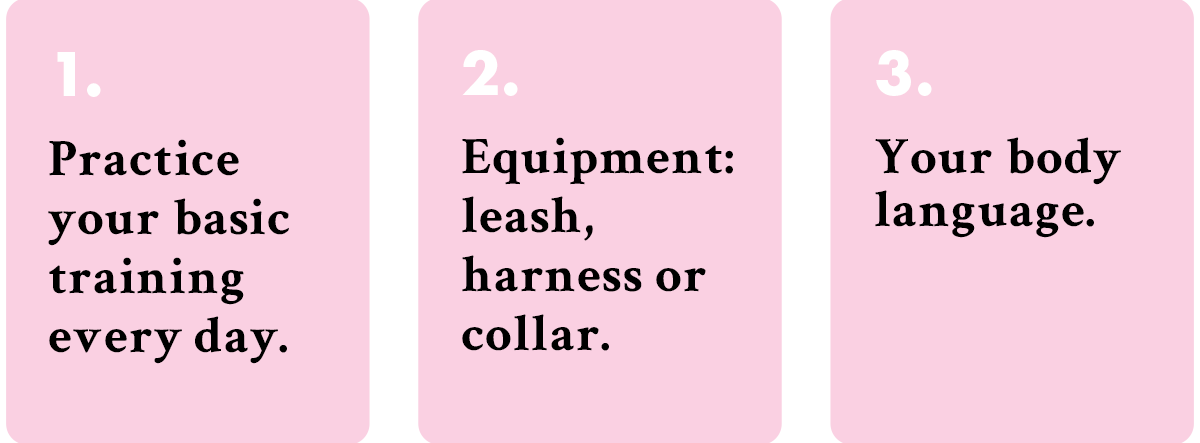3 Steps to Changing Leash Reactivity
1. Practice your basic training every day.
Even if it’s just 3 sits every day, but it must be done like this…
You say “sit,” dog sits you say (in happy voice), “yes! Good dog” while treat goes in mouth.
This exercise is not about if your dog can sit or not, it’s about the act of your dog practicing listening to you! This is classical conditioning. Remember in psychology Pavlo’s theory with the dog salivating when it hears the bell?! You are classically conditioning your dog to be happy when you say “yes, good dog!”
Side note, I don’t use treats when on a walk, the reward is leash freedom and getting to go for a walk!
2. Equipment. How to hold the leash and using the proper harness or collar.
When training you’ll want to use a 4ft basic flat or rope leash. Eventually you can play with others.
If your dog pulls, you’ll want a front & back clipping training harness. (We sell the Wonder Walker in the Boutique! I’ve seen it work wonders.)
I do recommend any basic harness especially for smaller dogs. But if your dog prefers just a collar, then I say they can graduate into just wearing a collar once they have perfect leash walking manners.
Now you’re ready for the walk! Your dog is classically conditioned to listen to you, you have the proper equipment so now it all comes down to you!
3. Your body language, reading signs and communicating with your dog.
This is a bit more tricky to write, much easier for me to show you, but here goes... Wrap the lead so you can keep your dog on close lead, giving slack and the feeling of freedom is the reward for good behavior.
Relax your body, and breathe, create almost a tunnel vision with your mind to the end of the street and focus only on that.
DO NOT LOOK AT YOUR DOG! If you happen to see a trigger (ie. dog) breath, relax and ignor keep on going! If your dog sees the other dog, praise immediately “look!” “Yes, good dog” … if your dog reacts give a stern correction with your voice, “ut uh” “no” immediately when they stop start praising “yes, good dog!” Relax focus back on end of the street and keep going!
By stringing together many positive walks, overtime the communication and expectations will become easy. Eventually wouldn’t it be nice to say “hi” to another dog or neighbor on lead?
Some things to know:
🐾 Every time your dog barks at a person or dog and they leave, your dog is being reinforced to bark (they are getting what they want!) I want this dog to leave so I bark at them and it works.
🐾 Every time you see a trigger for your dog, ie another dog, you get nervous and stop breathing in fear of the embarrassment your dog is about to cause. True or false? If true, your dog interprets this as… my owner is terrified of other dogs, I must bark to protect them and keep those dogs away!!
🐾 The methods I use are based on proven scientific principles. They do take effort, focus and commitment on your part, but if implemented correctly they solve the problem and change the behavior. They require you working with your dog, which will only strengthen the bond between you.
It’s time to take control of your walks and enjoy them!



